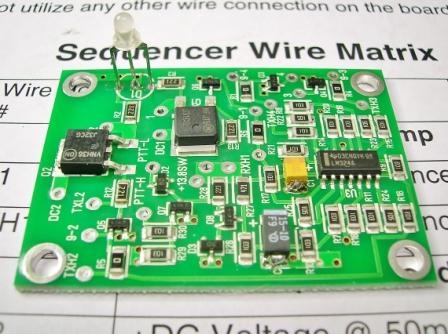Having interfaced a number of transverters into radio systems I’ve learned it’s always good to use a sequencer. Sequencers are intended to be used with any lash-up that requires separate sequenced switching of circuits to control pre-amps, relays, transmitters, and power amps. This will prevent transmitting with a high powered amplifier into a coax relay before it has completed switching. This ‘hot’ switching can drastically shorten the life of these expensive relays.
A simple scenario is that you have a transceiver, amplifier and relays. You may have converted something like an AM-6155 or Harris TV amp. Since these amps are designed to broadcast 24/7 there is no transmit/receive switching. So in order to use them you need to put coax relays on the input of the amp and the output.

In the diagram above the black lines indicate rf paths (via coax cables). The colored lines indicate a PTT signal or switching of DC voltage. When the radio is keyed the red line (PTT to ground) comes out of the radio and into the sequencer. In this case the sequencer reacts by turning off the voltage to the relays and after a 15ms delay sends the PTT to the amplifier. When the radio is unkeyed the process is reversed. The amplifier is unkeyed and then the relays are switched. There can be even more devices involved such as a transverter and or a preamp.
For my Harris amp project I decided to use a low cost relay from Down East Microwave built from a WB5LUA design but using solid state switching rather than mechanical relays. This sequencer came partially assembled for $25.

Typically you would want the relays powered so they are in normally closed position. This way if you had a preamp inline and there was a failure the relays would close and the rf would go into the amplifier rather than directly into the preamp. It gets costly real fast when you have to keep replacing the GaAsFET in your preamp. However in this case I want the reverse. I’m not running a preamp inline and I don’t always run the amplifier and it would be nice to be able to not have to switch coax every time I want to run my transceiver barefoot. It would not be good to drive 100W into the amplifier. I’m setting up the relays in normally closed position so with no power the transceiver goes straight through to the antenna. When the PTT is engaged the relays will turn on and then the amp will be enabled. Here is a short clip of the sequencer in action.